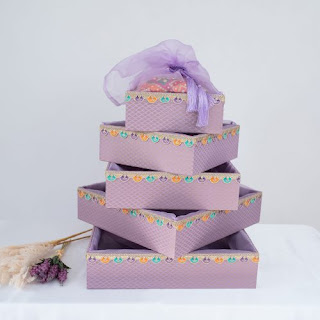Design Shawl: A Symbol of Culture and Style
Across cultures and continents, shawls have been cherished as symbols of respect, modesty, and craftsmanship. Among the many forms of shawls, the design shawl stands out for its unique blend of heritage and modern aesthetics. Whether draped over the shoulders at a ceremonial gathering or wrapped snugly during cold winters, the design shawl continues to hold cultural and stylistic significance, especially within South Asian and Sikh communities.
Understanding the Design Shawl
A design shawl refers to a shawl that has been intricately patterned or embroidered to convey elegance, character, and sometimes even a message. These shawls are often handcrafted using traditional methods, with motifs that can include florals, paisleys, religious symbols, or even geometric patterns. The design is typically what distinguishes an ordinary shawl from a masterpiece.
Historically, design shawls have been woven by skilled artisans in regions like Kashmir, Punjab, and parts of Central Asia. The meticulous process can take days or even weeks, depending on the complexity of the design. This labor of love results in a piece of clothing that transcends time, often passed down through generations.
The Role of Design Shawls in Sikh Culture
In Sikh tradition, clothing holds great importance. It reflects not only modesty but also devotion and pride in one’s identity. Shawls, especially those worn during religious ceremonies or significant events, are often beautifully designed to represent the richness of Sikh culture.
A Sikh man attending a Gurdwara or a cultural function might wear a design shawl over his traditional attire. This shawl complements his Men Mala (a spiritual necklace often worn by devout Sikh men) and his turban. The harmony between these accessories reflects balance, discipline, and faith.
The combination of a carefully draped shawl, a well-tied turban, and a Men Mala creates a regal appearance—one that not only shows devotion but also personal pride. This attire is a celebration of heritage, and each component plays its own role in preserving tradition.
The Men Mala: Symbol of Devotion
The Men Mala is more than a piece of jewelry. For Sikh men, it’s a sacred item that often includes beads made from Rudraksha, Tulsi, or sandalwood. Worn close to the heart, the mala represents spirituality and connection to the divine. In many cases, it complements the design shawl by adding depth and symbolism to one’s appearance.
Pairing a shawl with a Men Mala creates a powerful visual narrative—one that speaks to commitment, dignity, and cultural pride. Whether during daily prayer or major festivals like Vaisakhi and Gurpurab, these elements come together to express the rich traditions of Sikhism.
Craftsmanship Behind Every Design Shawl
A truly exceptional design shawl starts with high-quality materials. Wool, pashmina, silk, and even blended fabrics are often used depending on the region and intended use. Artisans then bring the material to life using techniques such as:
-
Embroidery: Using threads of gold, silver, or colorful cotton to create elaborate motifs.
-
Printing: Involves stamping or screen printing for more modern, mass-produced styles.
-
Weaving: Intricate patterns are woven directly into the fabric using handlooms.
Design shawls may also feature embellishments like sequins, beads, or mirror work, adding texture and shimmer that make them suitable for weddings or festivals.
One particularly unique type of design shawl is the Phulkari, a traditional Punjabi shawl known for its vibrant floral embroidery. Another is the Jamawar, originally from Kashmir, which is famous for its fine threadwork and luxurious texture.
Modern-Day Appeal and Fashion
While shawls were once considered garments mainly for the elderly or the ultra-traditional, modern fashion has revitalized their appeal. Celebrities, influencers, and fashion designers now incorporate design shawls into contemporary wardrobes. Whether worn over Western-style blazers or traditional kurta pajamas, shawls provide warmth and sophistication.
Men today often pair shawls with accessories like the Men Mala, turbans, or even statement rings to express their individual style while paying homage to their roots. The fusion of tradition with trend has made design shawls a staple in festive, formal, and even semi-casual settings.
The Growing Trend to Buy Sikh Turban Online
As the demand for traditional wear has grown, so has the convenience of acquiring it. The ability to buy Sikh turban online has revolutionized how people prepare for religious and cultural events. These online platforms often offer curated collections that include not only turbans but also accessories like design shawls and Men Malas.
Shoppers can now choose from a wide range of colors, materials, and patterns, often accompanied by product reviews, style suggestions, and even instructional videos on how to tie turbans or drape shawls. This digital revolution makes it easier for diaspora Sikhs and enthusiasts worldwide to stay connected to their culture.
Whether you're shopping for a wedding, Gurpurab, or just updating your wardrobe, online stores provide a seamless way to access traditional pieces with modern convenience. Some of these platforms even offer custom embroidery and personalized shawl options, allowing individuals to add initials, symbols, or special dates to their garments.
Tips for Styling a Design Shawl
Styling a design shawl effectively requires balance and intention. Here are a few tips:
-
Let the shawl stand out: If your shawl has intricate embroidery or bold colors, pair it with solid, muted clothing.
-
Coordinate with accessories: Use your Men Mala or turban to complement the color scheme of your shawl.
-
Experiment with draping styles: Over one shoulder, across both shoulders, or even wrapped like a scarf—different styles can give a fresh look.
-
Consider the occasion: Choose lightweight, subtle designs for casual wear and more ornate pieces for formal events.
-
Layer thoughtfully: A shawl over a kurta and Nehru jacket can create a layered, regal appearance perfect for weddings or festivals.




Comments
Post a Comment